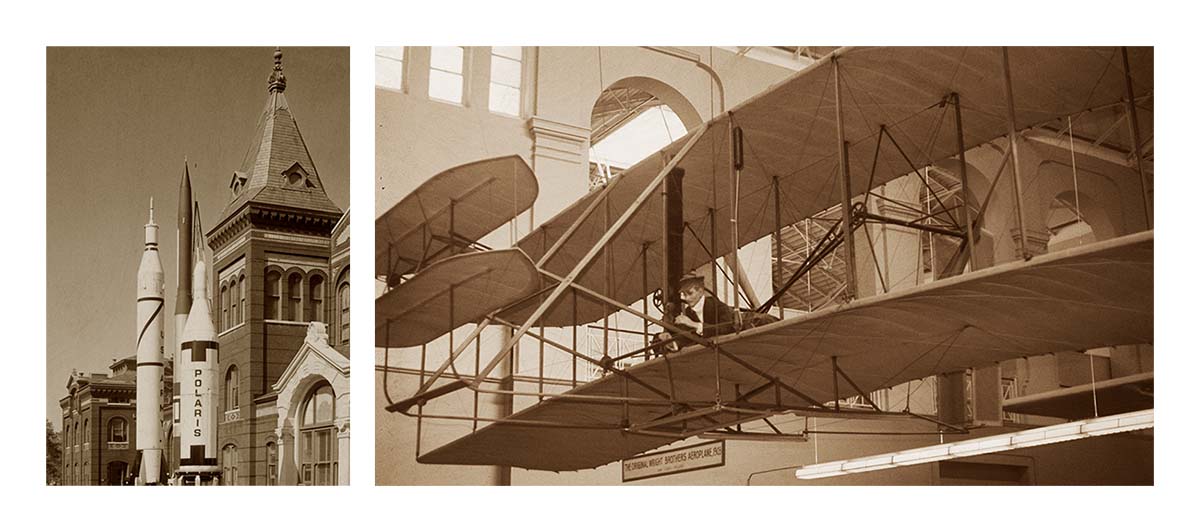
These two images were shot at the Smithsonian Museum during my high school field trip to Washington D.C. in 1966.
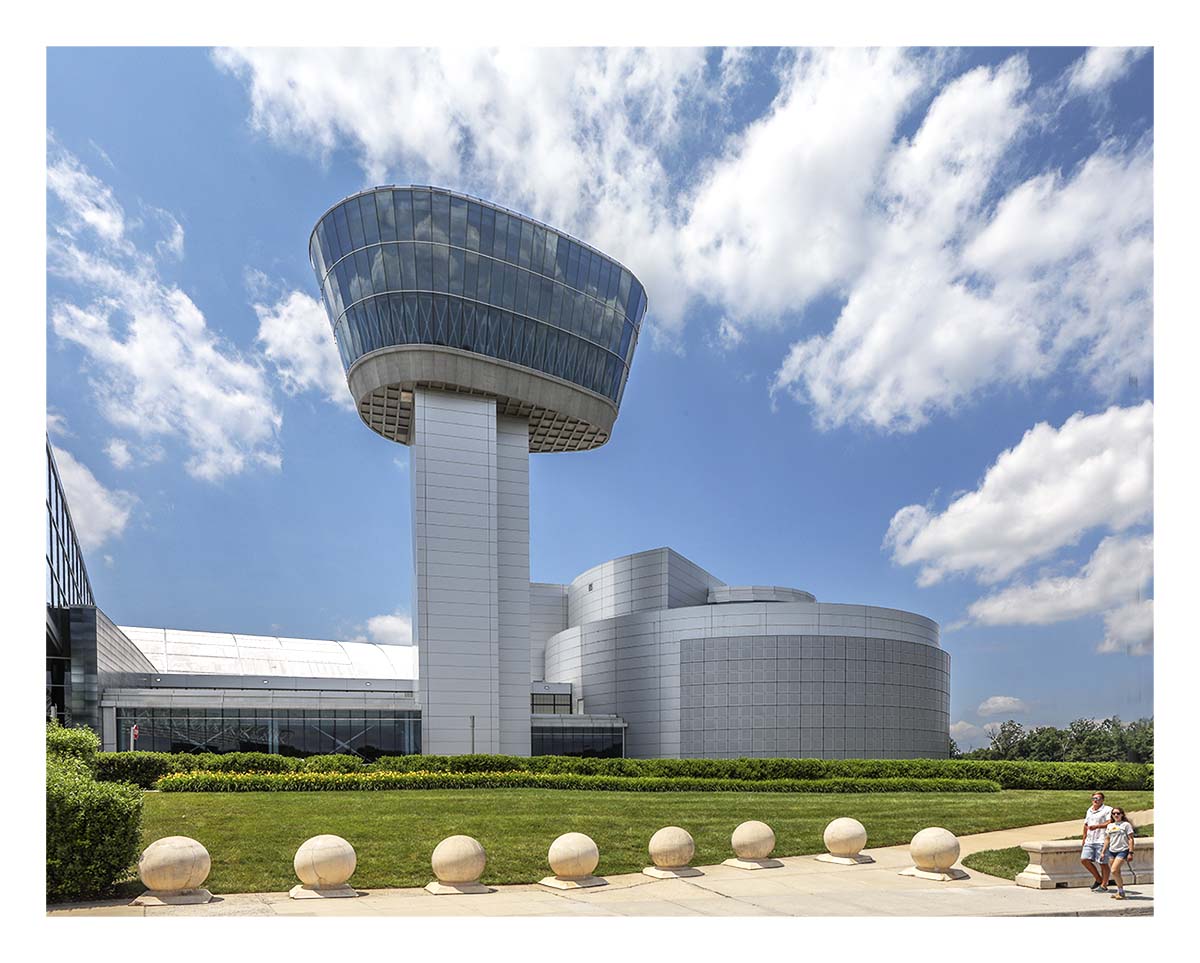
The Steven F. Udvar-Hazy Center. The tall structure is the Donald D. Engen Observation Tower to the right of the museum's entrance.
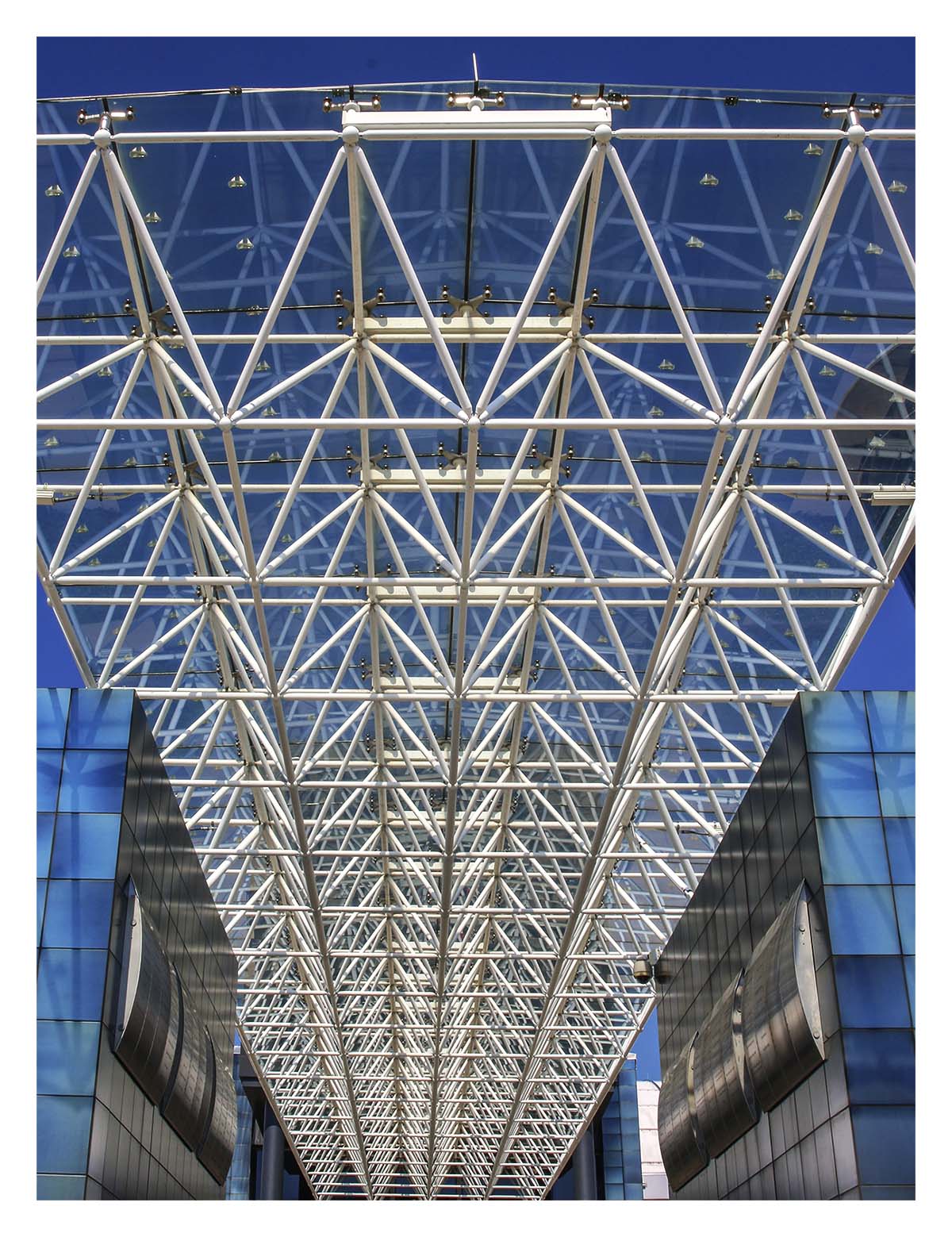
The Steven F. Udvar-Hazy Center's entrance
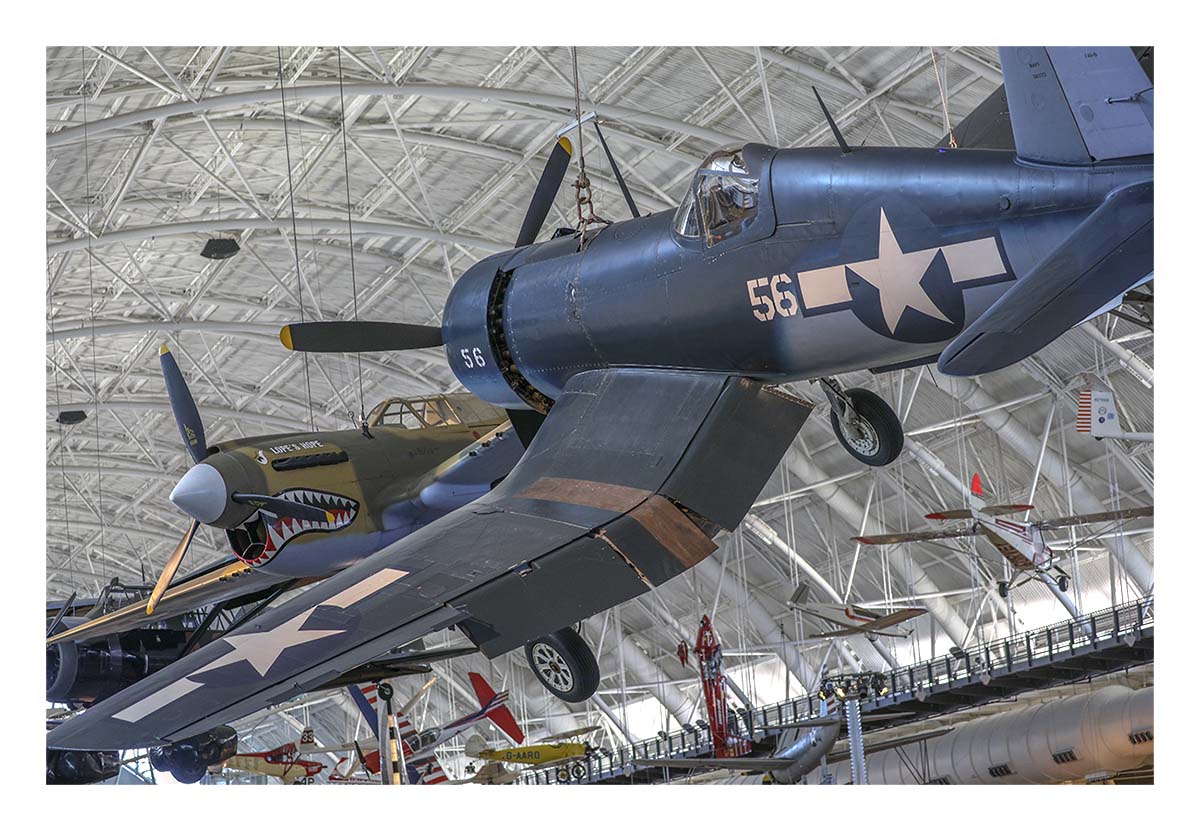
Vought F4U-1D Corsair. This airplane is painted in the colors and markings of the Corsair "Sun Setter," a Marine close-support fighter assigned to Marine Fighter Squadron VMF-113 in July 1944. Interestingly, Charles Lindbergh flew bombing missions in a 1850 horsepowered Corsair with Marine Air Group 31 against Japanese strongholds in the Pacific in 1944.
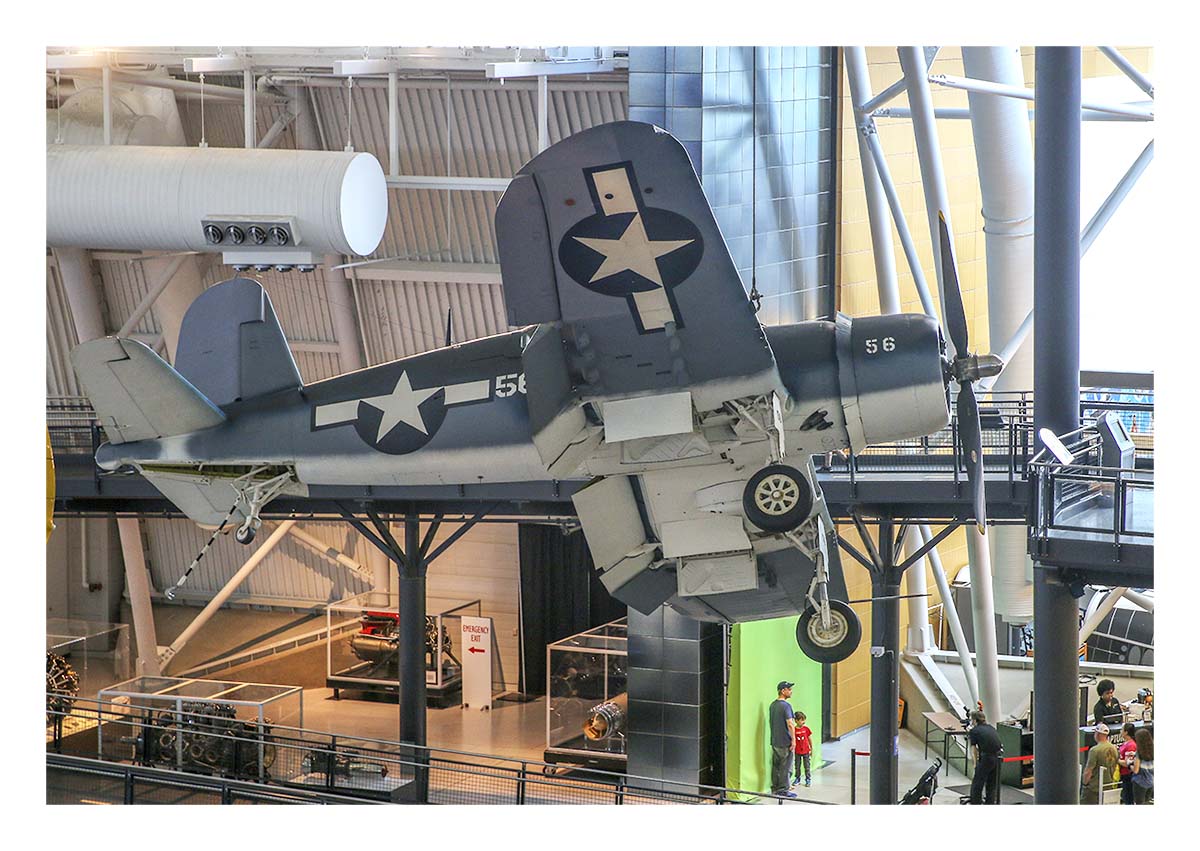
Bottom view showing the two-tone paint scheme on the Vought F4U-1D Corsair.
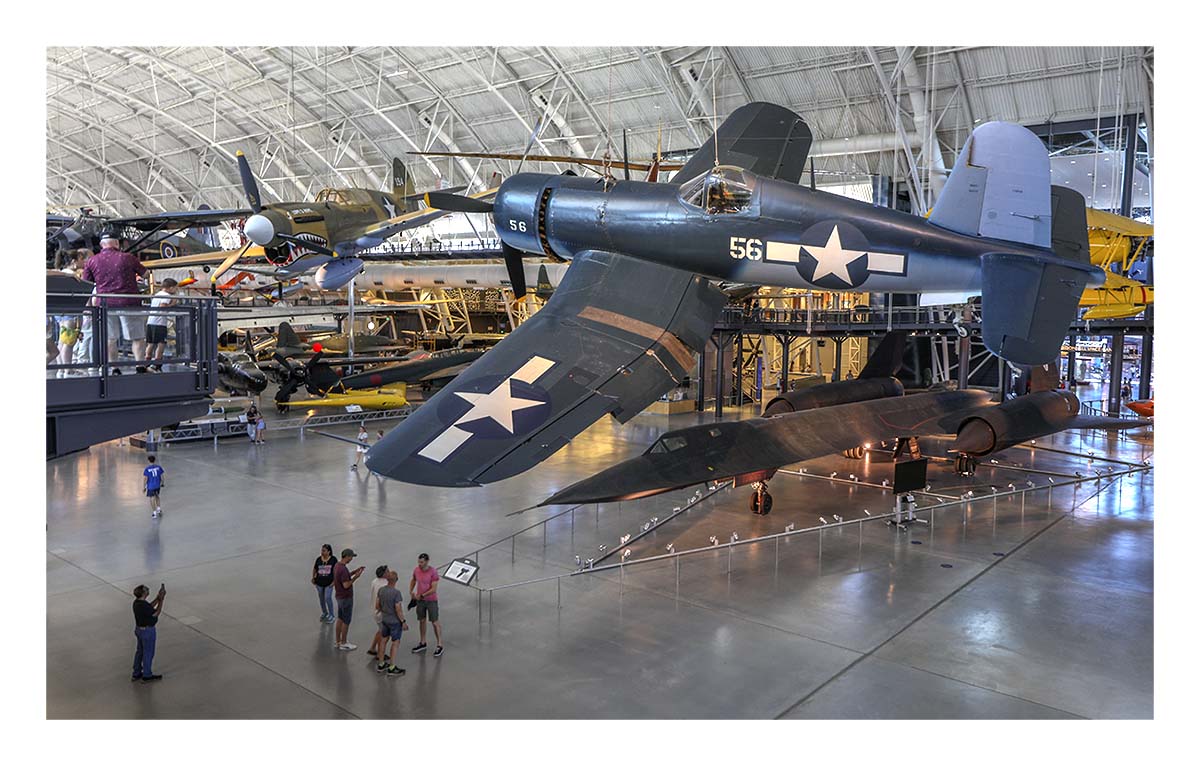
Vought F4U-1D Corsair.
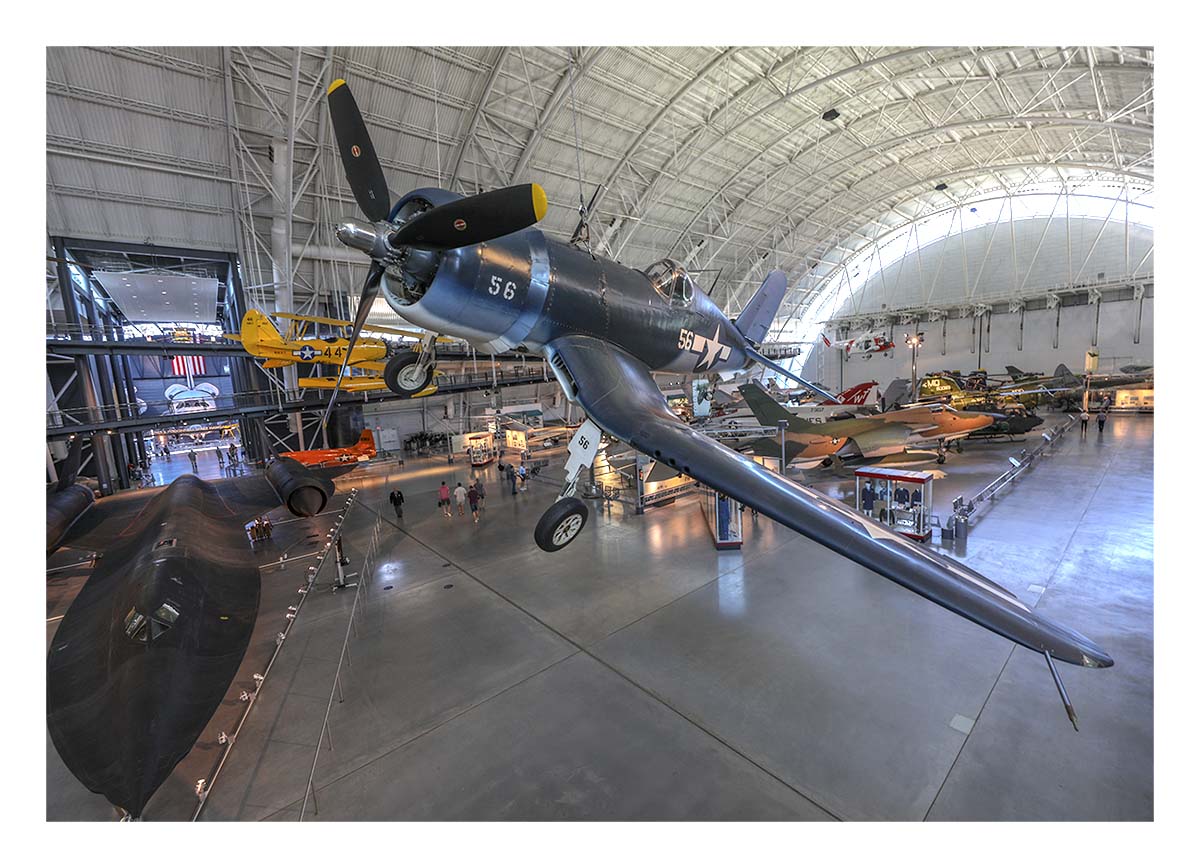
Another view showcasing the plane's "inverted gull" wings. The SR-71A seen on the left looks like it could not even fly.
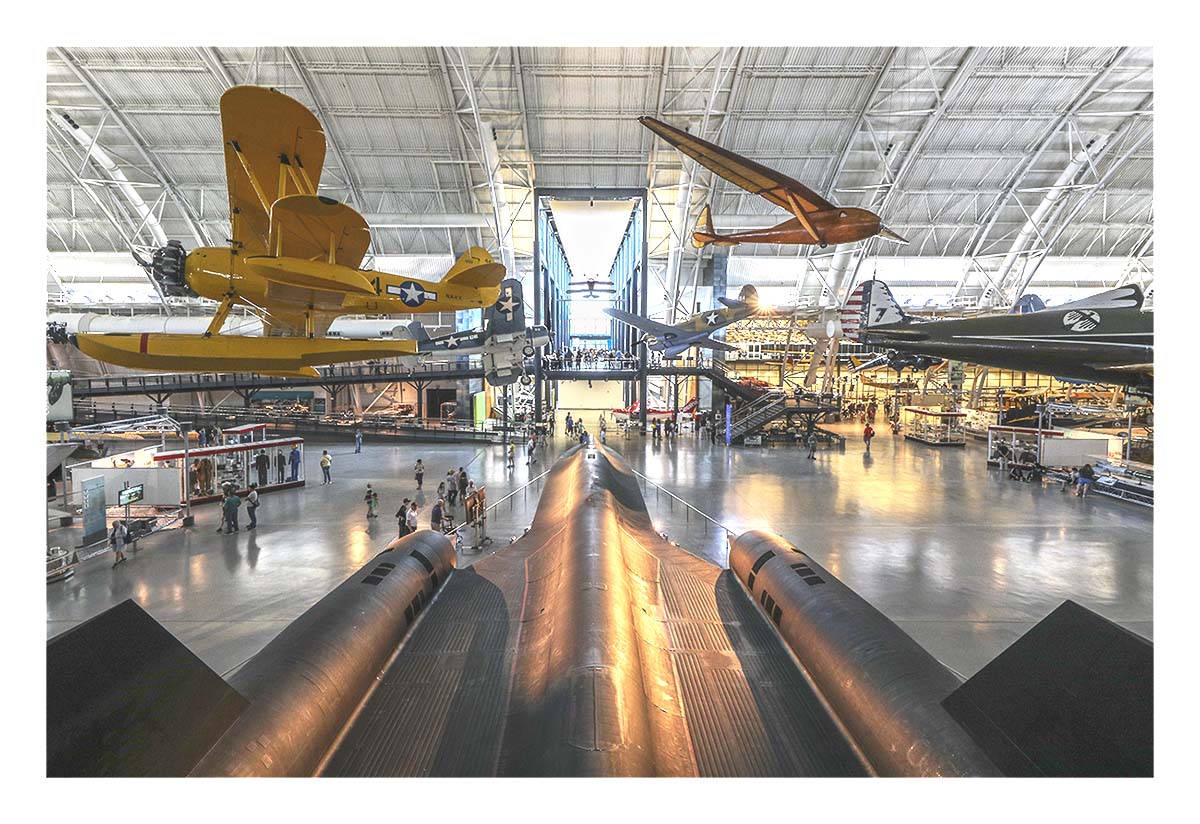
A view looking over the Lockheed SR-71A Blackbird at the museum's front entrance corridor. You can get a quick idea how enormous the museum's space is by just looking the size of the people on the floor.
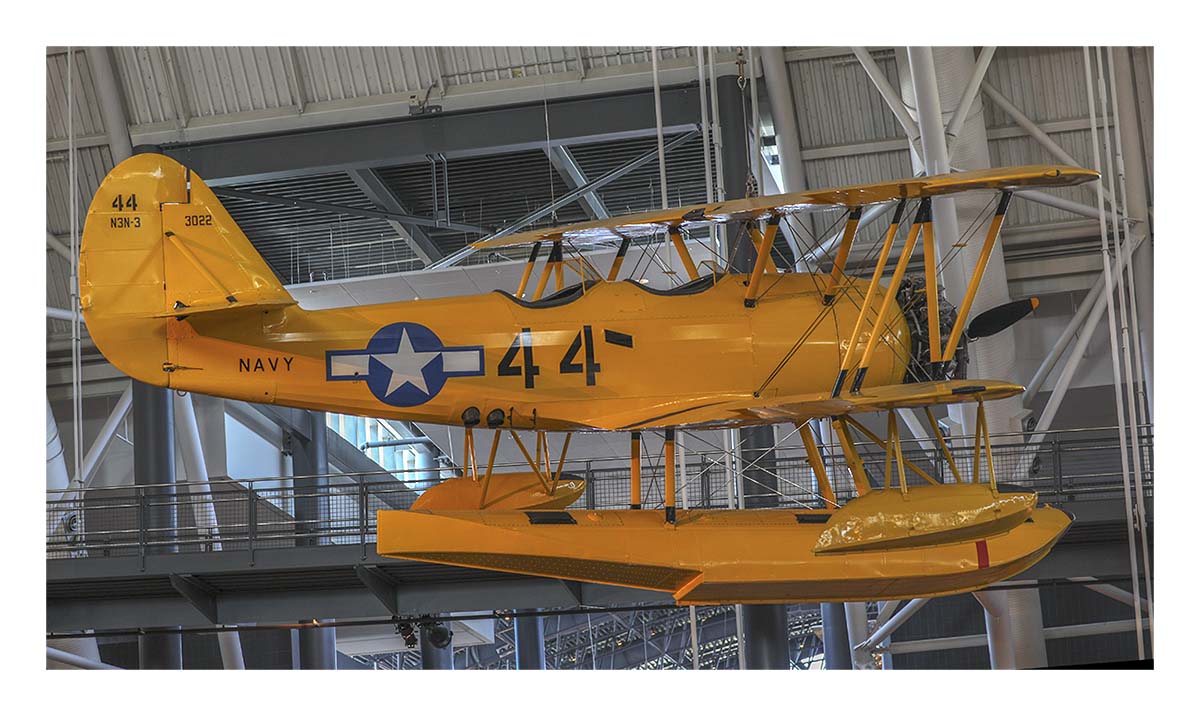
Naval Aircraft Factory N3N-3 Yellow Peril. This airplane was built in both land and seaplane versions, and was the Navy's primary trainer.
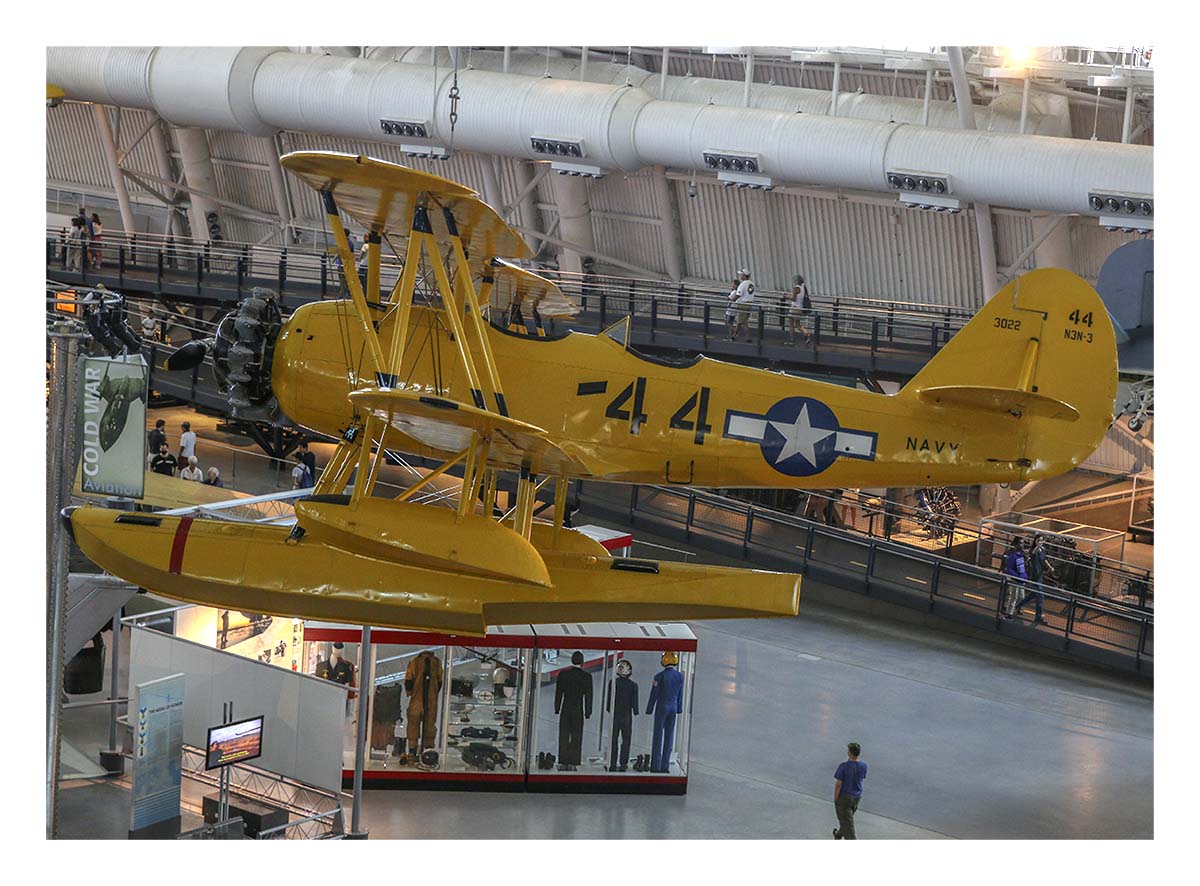
Just a beauiful aircraft
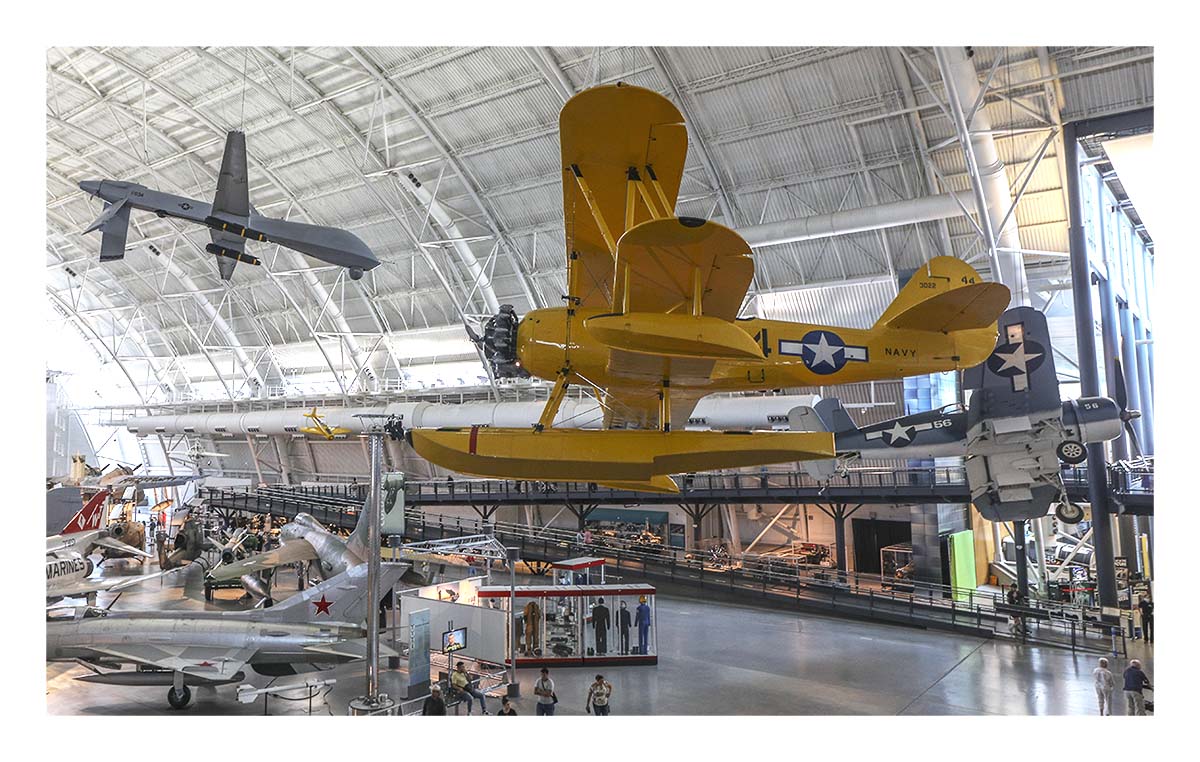
The Naval Aircraft Factory N3N-3 Yellow Peril shows the stark contrast to the modern General Atomics MQ-1 Predator Drone.
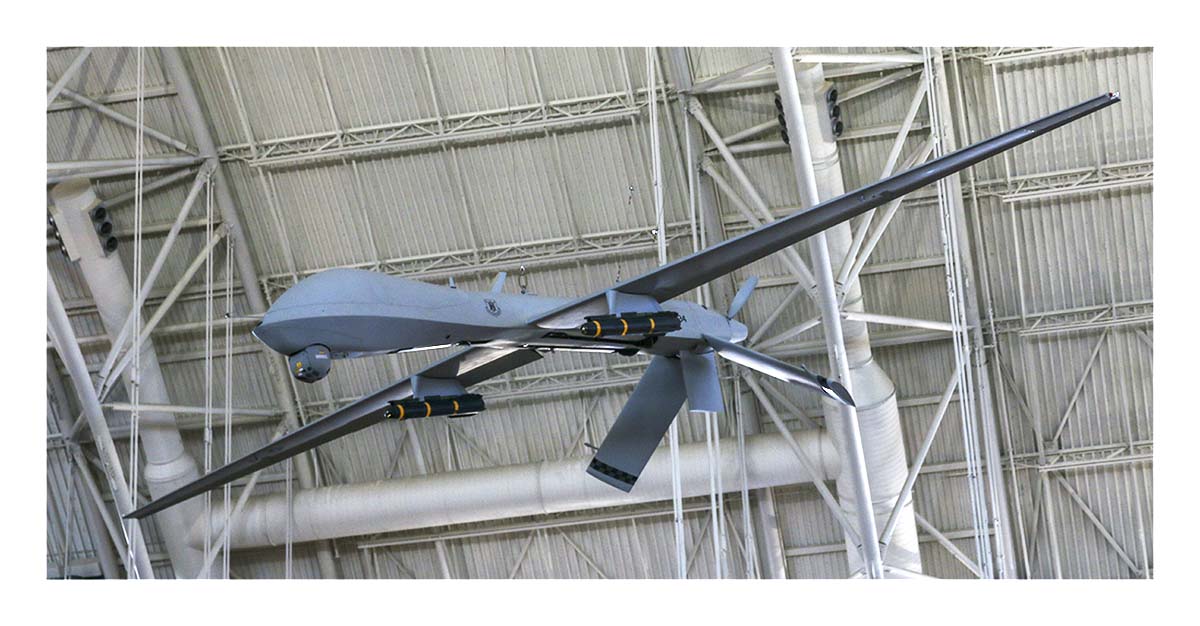
General Atomics MQ-1 Predator Drone. Times have changed as the original RQ-1 Predator drone was used as a reconnaissance unmanned aircraft, and todays "M" version, standing for multi-role, reflects its growing use as an armed aircraft. Notice the drone is shown armed with AGM-114 Hellfire missiles.
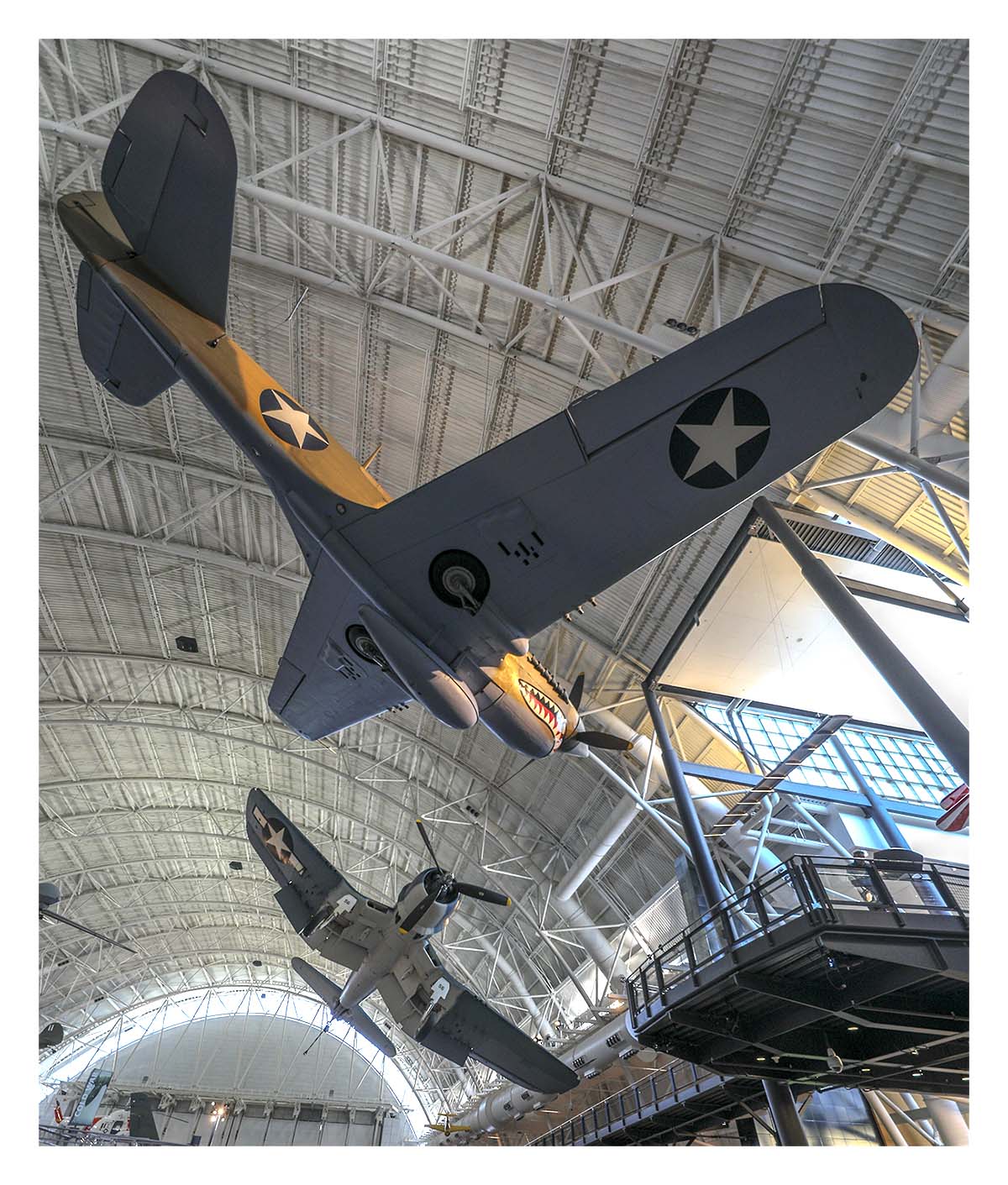
The Curtiss P-40E Warhawk (Kittyhawk IA). Whether known as the Warhawk, Tomahawk or Kittyhawk, the Curtiss P40 proved to be a very successful versatile fighter at the beginnings of World War II. Painted in the "Flying Tigers" scheme, the original group of P40 headed by General Claire Lee Chennault was part of the First American Volunteer Group (AVG) to help defend Republic of China against the Japanese. But while they were deployed before December 7, 1941, they only began to see combat after the Pearl Harbor attack.
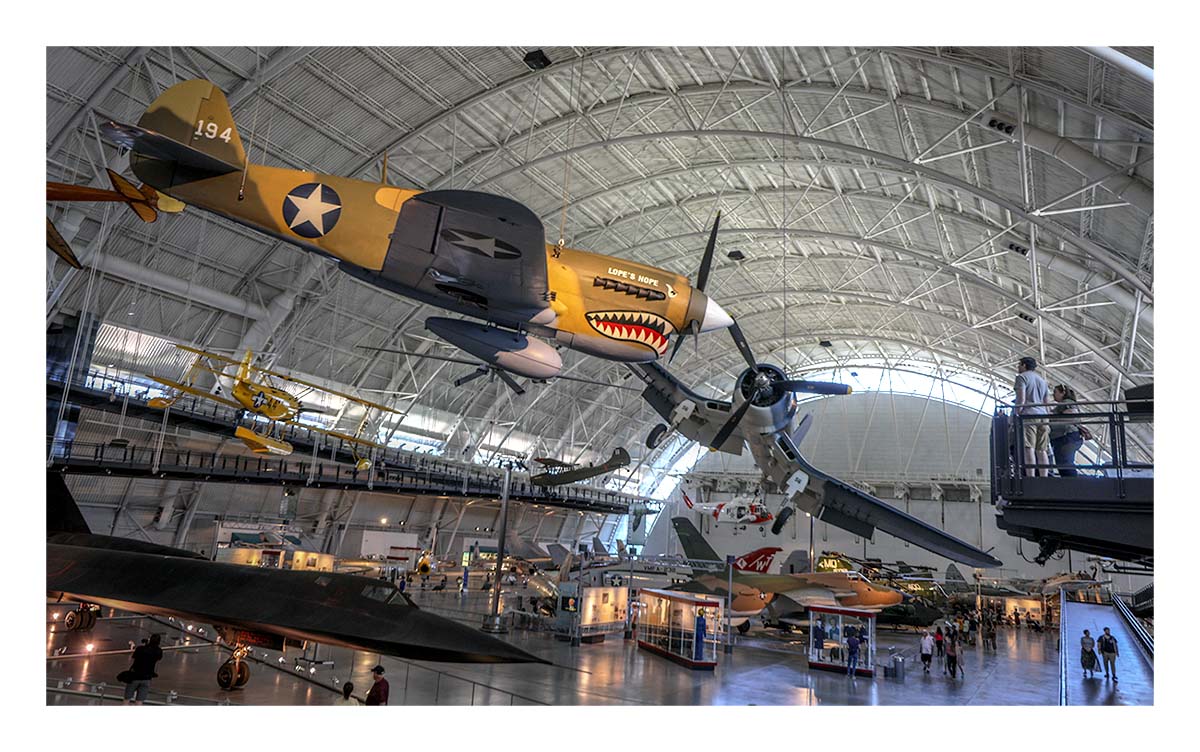
Curtiss P-40E Warhawk (Kittyhawk IA).
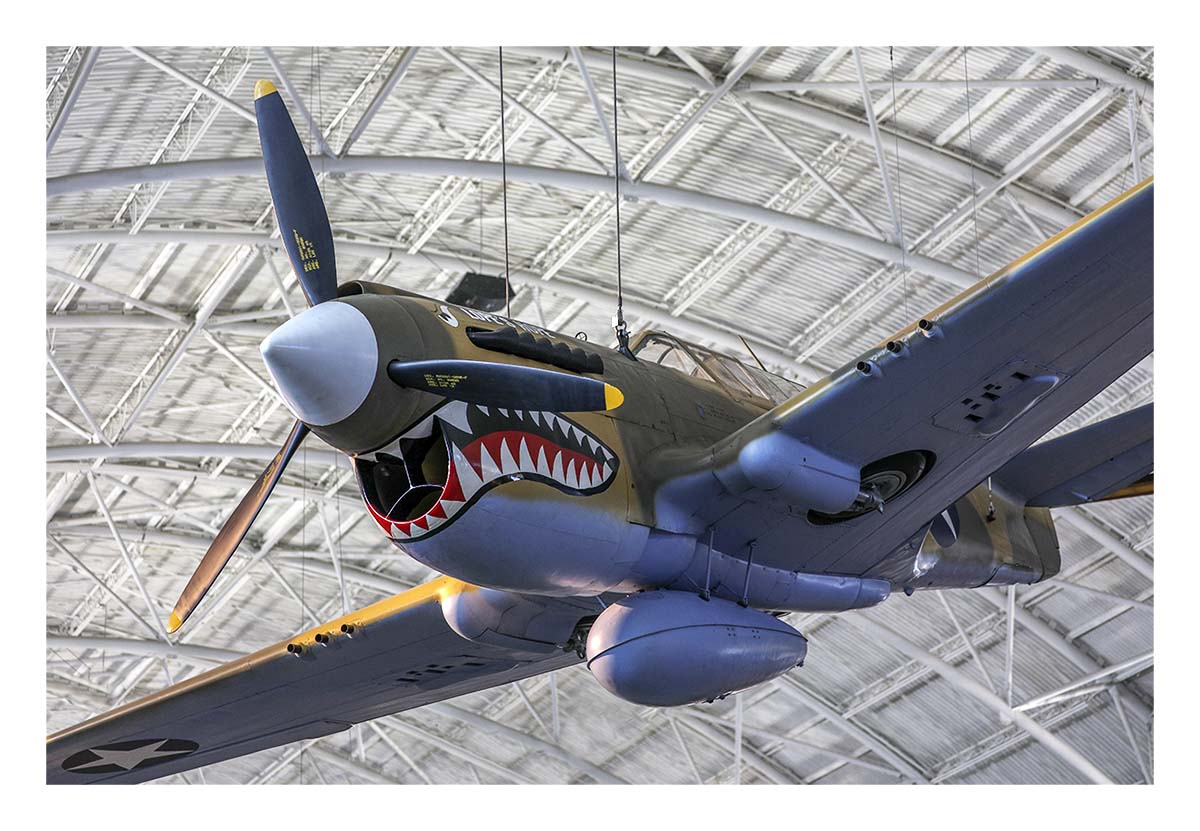
Curtiss P-40E Warhawk (Kittyhawk IA).
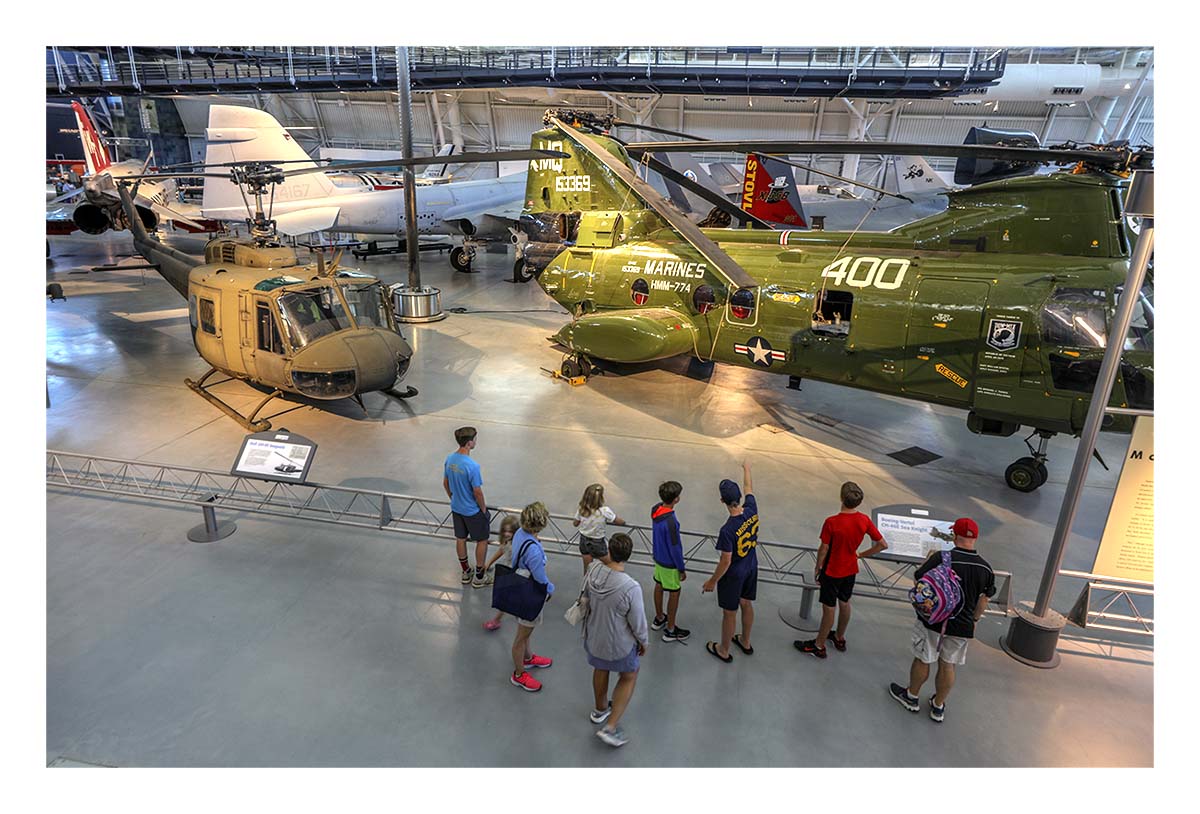
Visitors checking out the Bell UH-1 Iroquois, better known as a "Huey," on the left and Boeing Vertol CH-46F Sea Knight on the right.
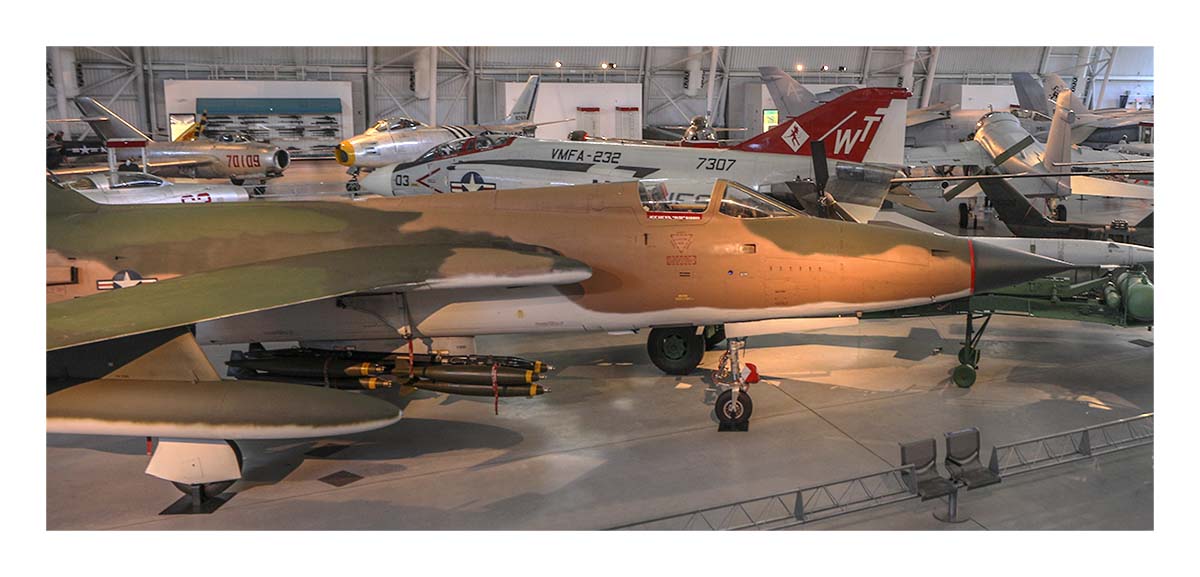
Republic F-105D Thunderchief, A single-seat, fighter-bomber capable of carrying nuclear weapons or heavy bomb loads at supersonic speeds.
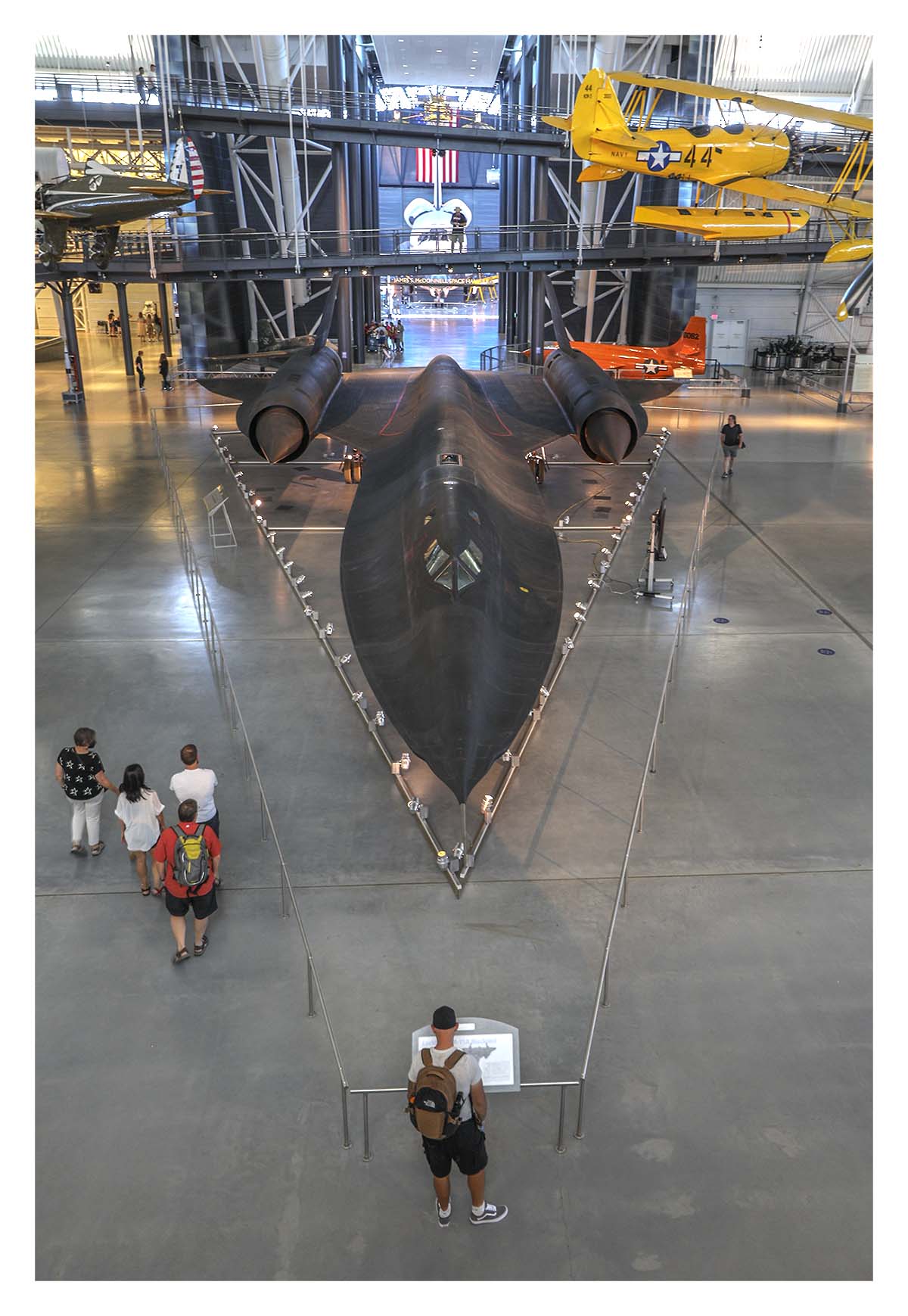
The Mach 3+ long-range, high altitude Lockheed SR-71A "Blackbird" strategic reconnaissance aircraft.
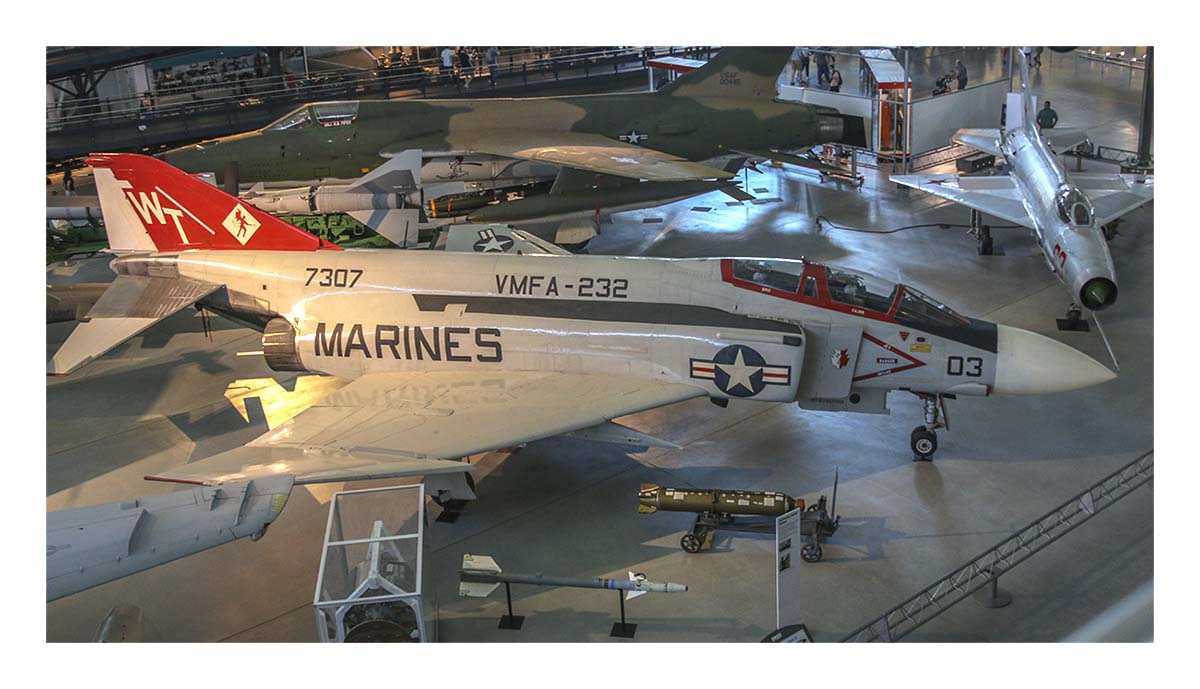
McDonnell Douglas F-4 Phantom II.
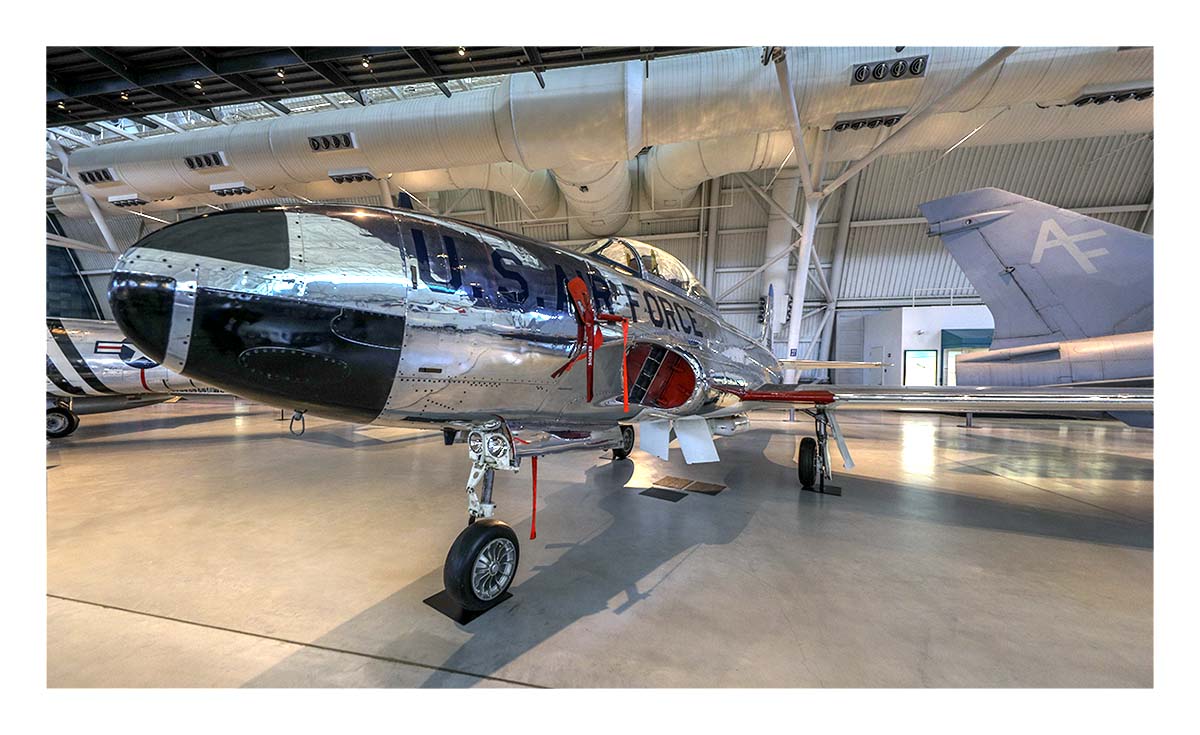
Lockheed T-33A-5-LO Shooting Star USAF jet trainer. Also known as the T-Bird.
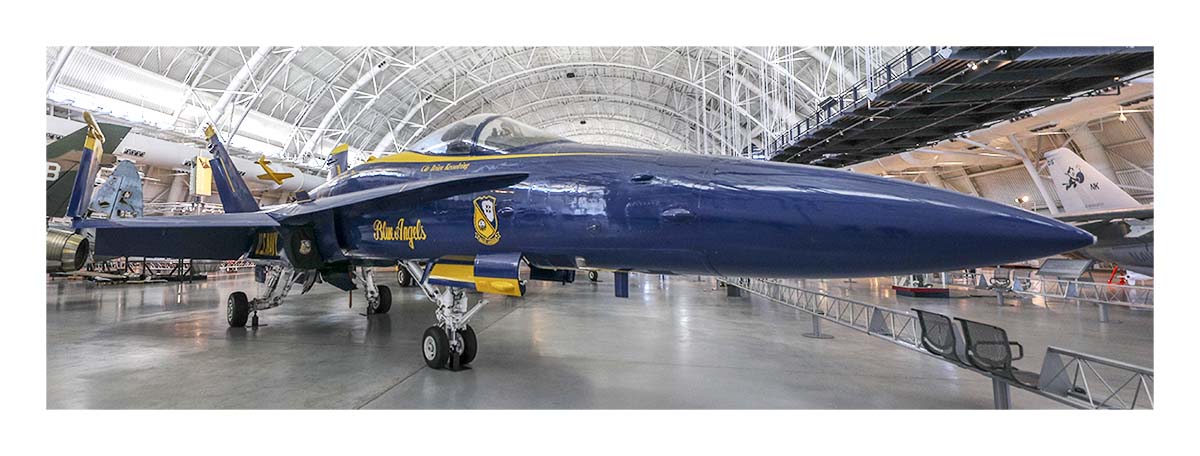
Blue Angels' F/A-18C Hornet.
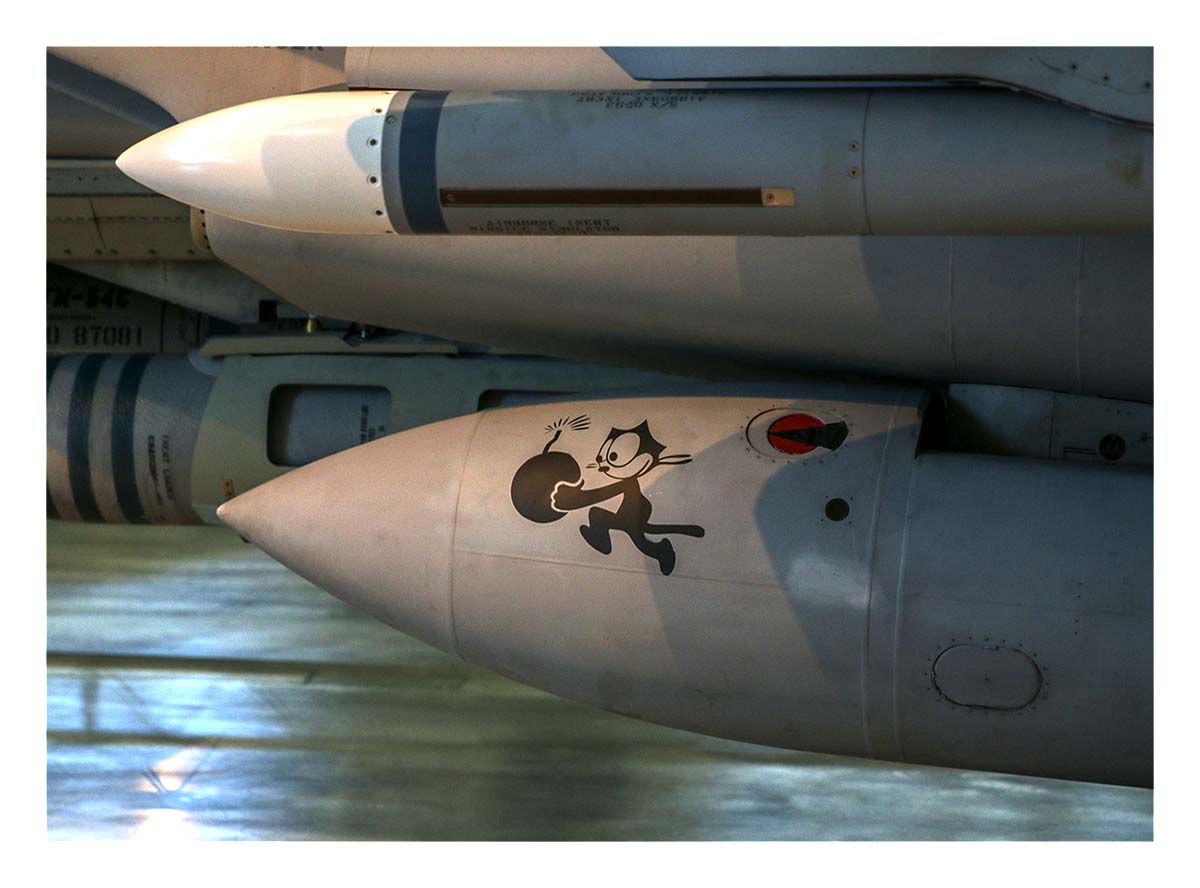
The United States Navy Fighting Squadron 6 insigna, the cartoon character Felix the Cat holding a bowling ball-like fused bomb. Originally established as Combat Squadron 4 in 1921, the fighter group was redesignated to Fighting Squadron 6 in 1927. Today, the VFA-31 or Strike Fighter Squadron 31 known as the Tomcatters, callsign "Felix" continues the tradition. The VFA-31 is Stationed at Naval Air Station (NAS) Oceana, Virginia.
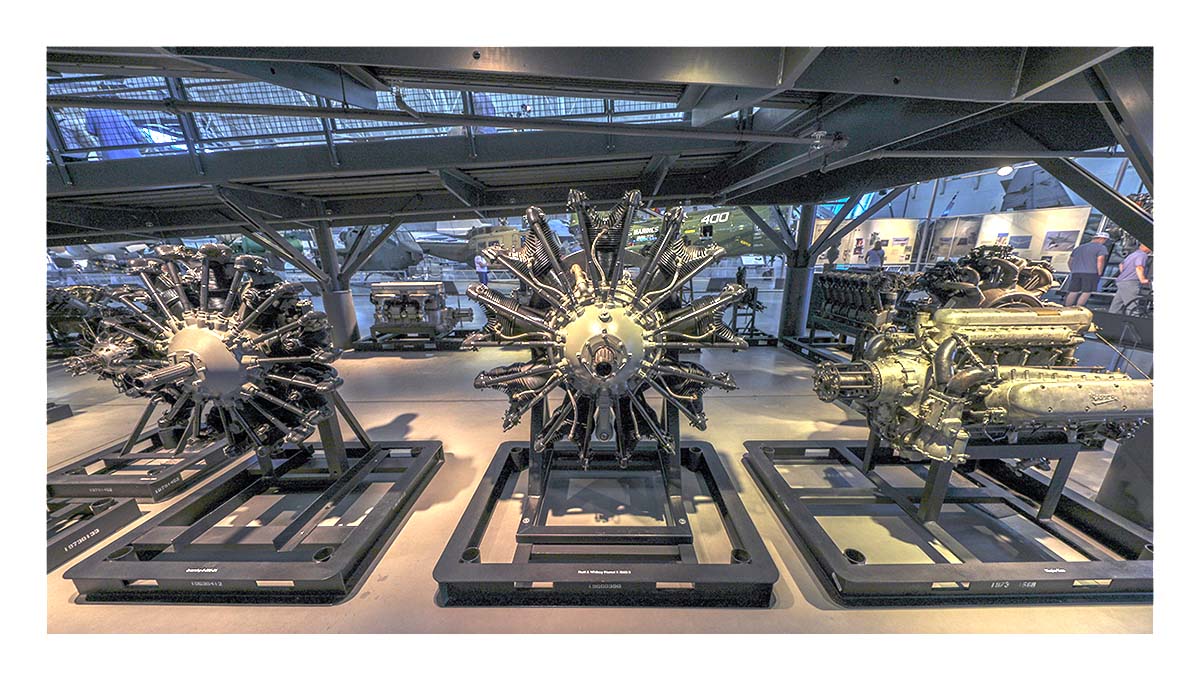
Display of early aircraft engines.
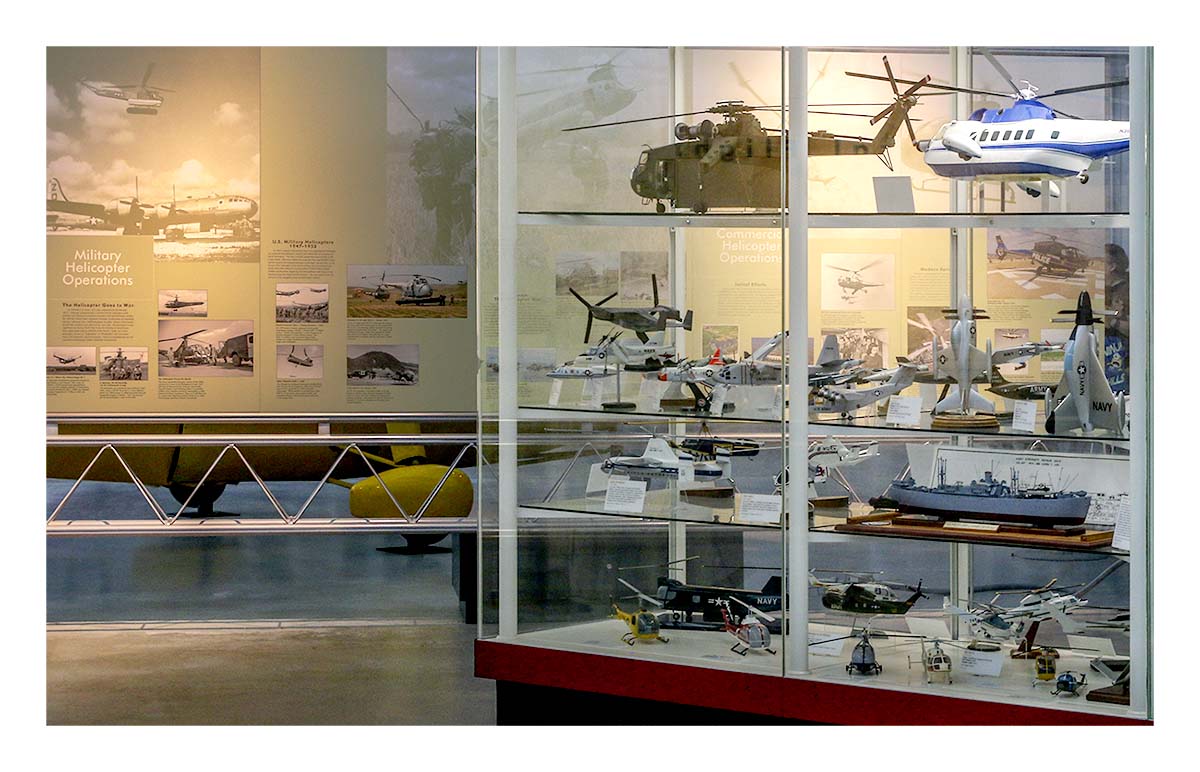
Display celebrating the helicopter.
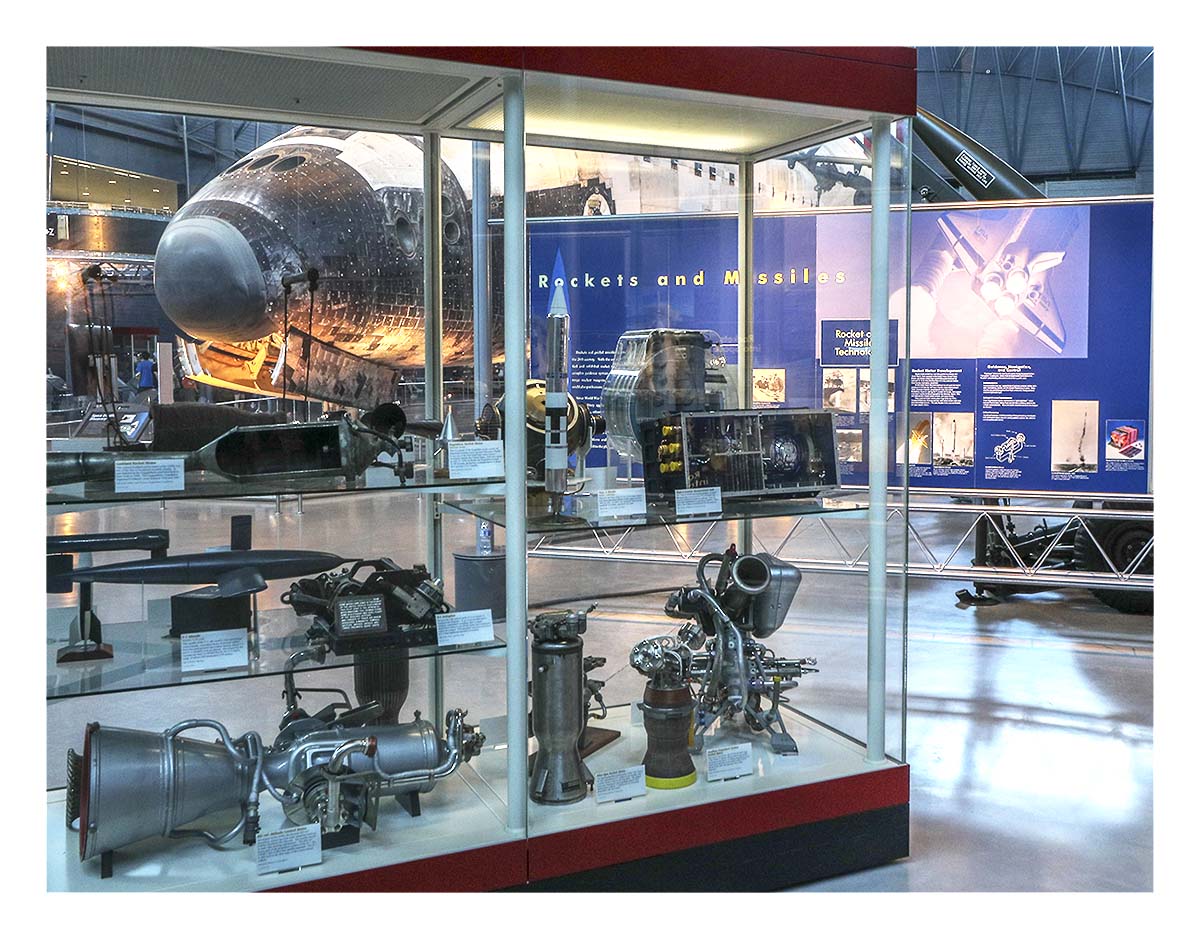
Various missile and rocket hardware on display.